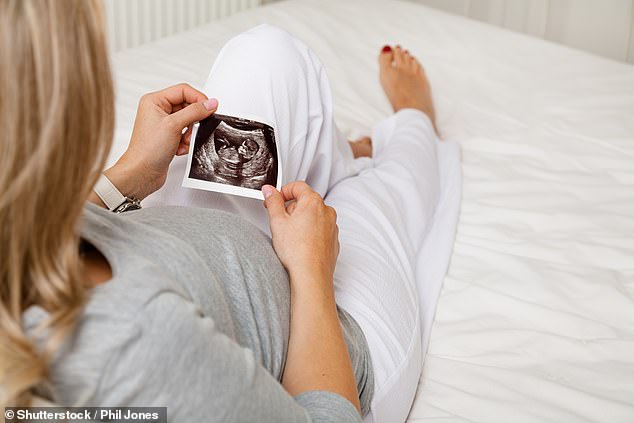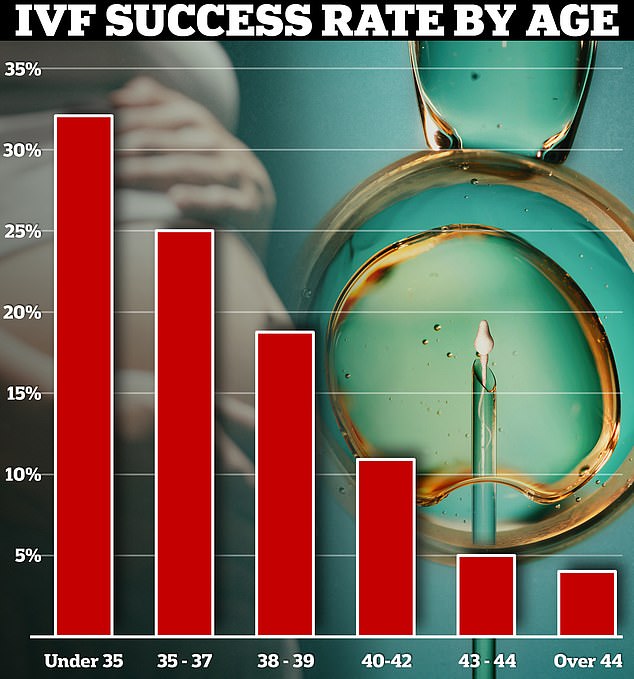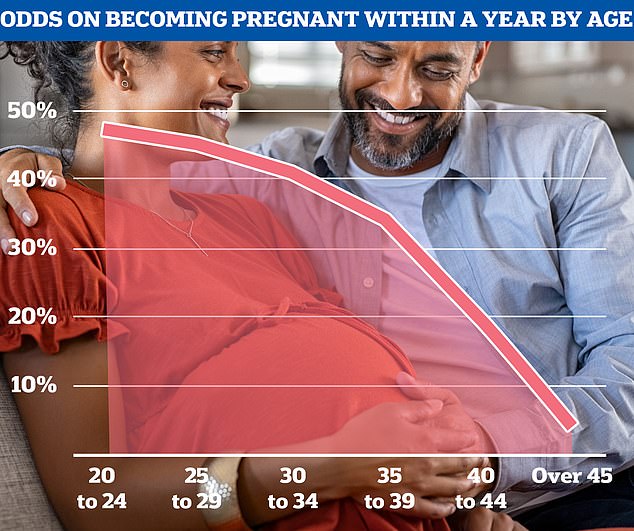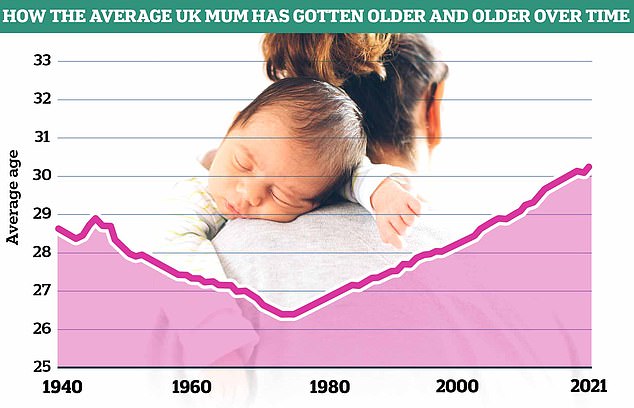Women are starting IVF too late, with the average age reaching 35 for the first time, the UK’s fertility regulator has warned.
More and more people are turning to egg freezing to delay motherhood, even though success rates decline with age.
A report by the Human Fertilisation and Embryology Authority found that women who begin fertility treatment are now typically six years older than those who have their first baby naturally.
The trend, which is reducing the chances of IVF working, has been blamed on long NHS waiting lists, Covid delays and the prohibitive costs of private treatment.
This comes at a time when an increasing number of women are also turning to IVF to become single mothers, with 3,548 attempts in 2022 compared to 1,953 in 2019 – a jump of 83 per cent.
The average woman had her first child at age 29 in 2022, six years younger than those who tried IVF for the first time

Using previously frozen eggs and embryos to try to have a baby years later is the fastest growing fertility treatment in the UK
According to the annual report, the number of members of same-sex couples also increased by more than a third, from 1,628 to 2,200 during the same period.
Using previously frozen eggs and embryos to try to have a baby years later is the fastest growing fertility treatment in the UK, the authors say.
Julia Chain, president of the HFEA, warned that “fertility treatment is no guarantee of having a baby.”
She said: ‘IVF success rates continue to improve, but as the likelihood of a birth declines rapidly with age, early access to fertility treatment is crucial for those who need it.
‘Our data shows that the average age of patients starting treatment for the first time is now almost six years older than the average age at which women in England and Wales gave birth to their first child.
“It is important to seek advice on fertility issues so that if treatment is necessary, patients can access it as soon as possible and reduce delays.”
Despite the increasing age of patients, advances in IVF have seen the overall pregnancy rate using fresh embryo and self-egg transfers rise from 21 to 31 percent between 2012 and 2022.

Fertility treatment currently has a success rate of up to 40 per cent. Around a third of IVF cycles among people under 35 resulted in a live birth in 2019 in the UK. However, this percentage dropped to just 4 per cent in people over 44.

While conception rates vary for each woman, statistics from the National Institute for Health and Care Excellence show that fertility levels generally begin to decline towards the end of the 20s and then decline rapidly from the mid-30s onwards.

Data from the Office for National Statistics (ONS) shows the average age of mothers in England and Wales has risen since the 1970s, now standing at 30.9 years according to the latest figures.
Women aged 18 to 34 had the highest pregnancy rate per embryo transferred, with more than four in ten (42 percent) successful.
This figure dropped to 34 percent in the 35-37 age group (which currently makes up the largest proportion of patients), 26 percent in the 38-39 age group, 16 percent in the 40-42 age group, and 9 percent in the 43-44 age group.
While all of these figures represent significant improvements (up from 22, 17, 10 and 5 percent respectively), experts urged couples to try to start treatment earlier to maximize their chances of success.
Figures from the Office for National Statistics show the average woman will have her first child aged 29 in 2022, six years younger than those who first tried IVF.
Egg freezing and storage also increased by 81 percent overall, from 2,576 cycles in 2019 to 4,647 in 2022, five percent of the total.
HFEA data shows the average birth rate after IVF also rose from 18 per cent to a preliminary figure of 24 per cent over the decade.
However, the proportion of IVF cycles funded by the NHS has fallen to 27 per cent, compared with four in ten a decade ago.
In England, less than a quarter (24 per cent) of attempts are funded by the NHS, compared with more than half (53 per cent) in Scotland and a third (34 per cent) in Wales.
Treatments fell in most regions, with the East Midlands having the largest decrease in NHS-funded cycles, from 1,451 to 753 (48 per cent) over the three-year period.
Yorkshire and the Humber recorded the largest increase, rising from 1,009 cycles in 2019 to 1,183 in 2022.
Sarah Norcross, director of the Progress Educational Trust (PET), said it was “appalling” that less than 25 per cent of fertility treatments were funded by the NHS in England.
She said: ‘For many women in England, accessing NHS-funded fertility treatment can take at least two years. And that’s not taking into account any additional delays, for example if a woman needs to lose weight to be eligible.
‘Those who are not eligible for NHS treatment will then look for ways to fund private treatment, during which time they will be no younger.
‘It is not surprising, then, that the average number of women undergoing their first IVF cycle is increasing.’
An NHS spokesperson said: “While these decisions are legally a matter for local health commissioners, it is absolutely right that they provide equal access to services based on the needs of people within their areas.”


